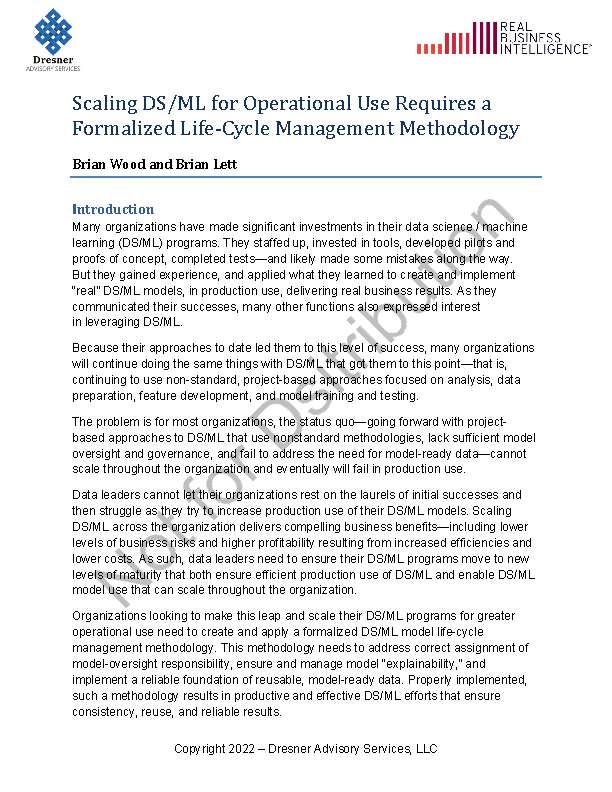
Many organizations have made significant investments in their data science / machine learning (DS/ML) programs. They staffed up, invested in tools, developed pilots and proofs of concept, completed tests—and likely made some mistakes along the way. But they gained experience, and applied what they learned to create and implement “real” DS/ML models, in production use, delivering real business results. As they communicated their successes, many other functions also expressed interest in leveraging DS/ML.
Because their approaches to date led them to this level of success, many organizations will continue doing the same things with DS/ML that got them to this point—that is, continuing to use non-standard, project-based approaches focused on analysis, data preparation, feature development, and model training and testing.
The problem is for most organizations, the status quo—going forward with project- based approaches to DS/ML that use nonstandard methodologies, lack sufficient model oversight and governance, and fail to address the need for model-ready data—cannot scale throughout the organization and eventually will fail in production use.
Data leaders cannot let their organizations rest on the laurels of initial successes and then struggle as they try to increase production use of their DS/ML models. Scaling DS/ML across the organization delivers compelling business benefits—including lower levels of business risks and higher profitability resulting from increased efficiencies and lower costs. As such, data leaders need to ensure their DS/ML programs move to new levels of maturity that both ensure efficient production use of DS/ML and enable DS/ML model use that can scale throughout the organization.
Organizations looking to make this leap and scale their DS/ML programs for greater operational use need to create and apply a formalized DS/ML model life-cycle management methodology. This methodology needs to address correct assignment of model-oversight responsibility, ensure and manage model “explainability,” and implement a reliable foundation of reusable, model-ready data. Properly implemented, such a methodology results in productive and effective DS/ML efforts that ensure consistency, reuse, and reliable results.
You do not have permission to access this document. Make sure you are logged in and/or please contact Danielle with further questions.